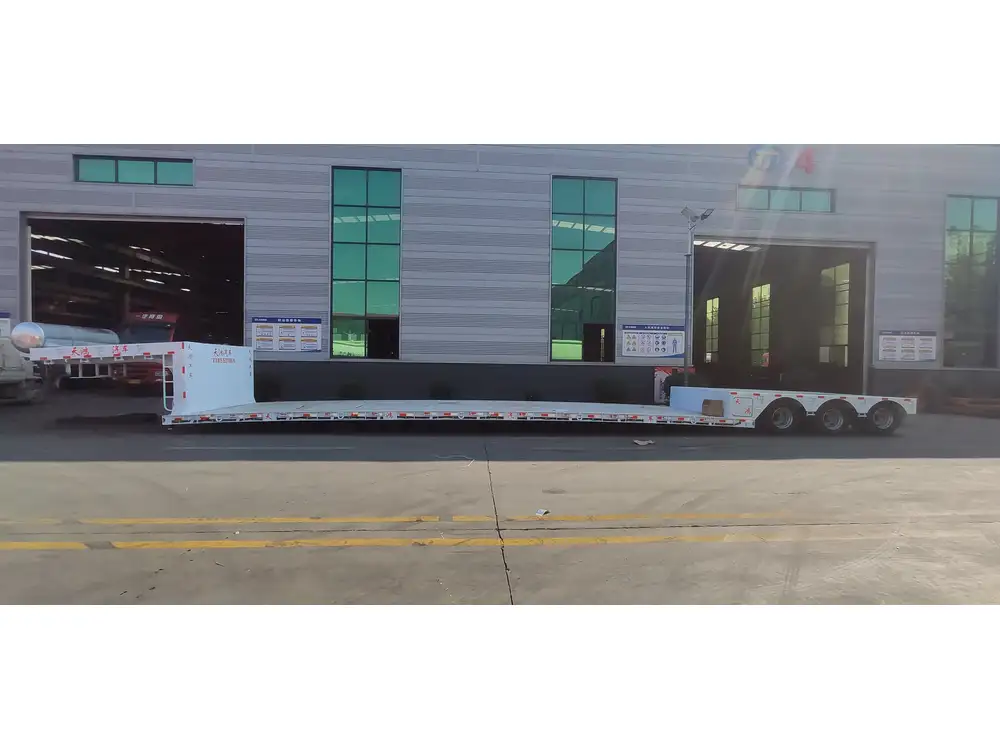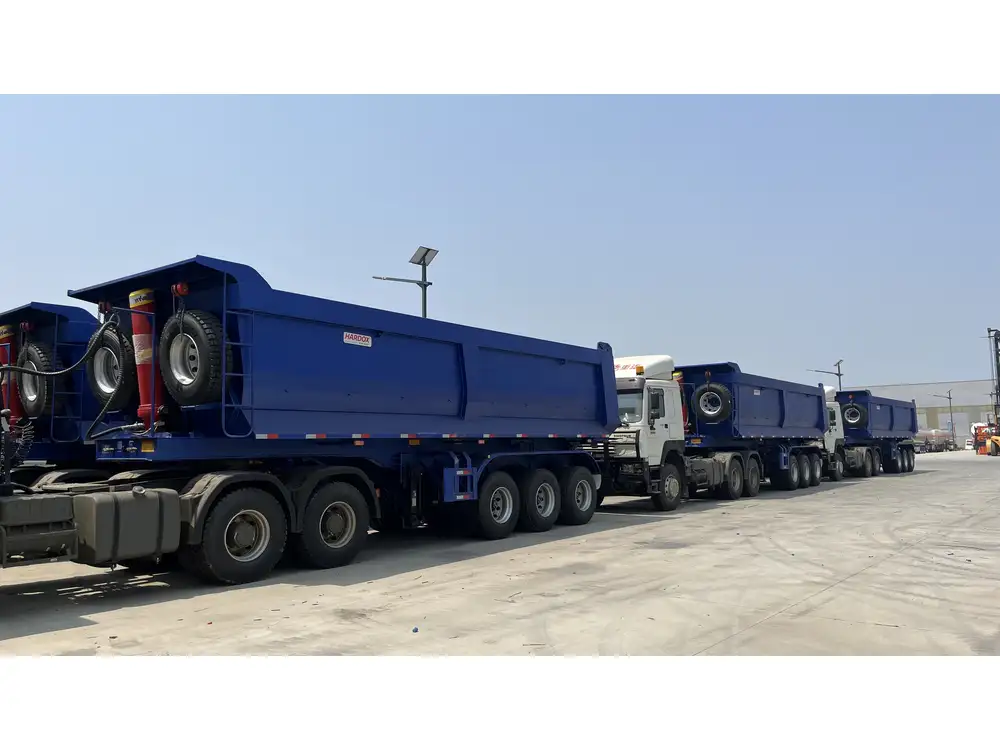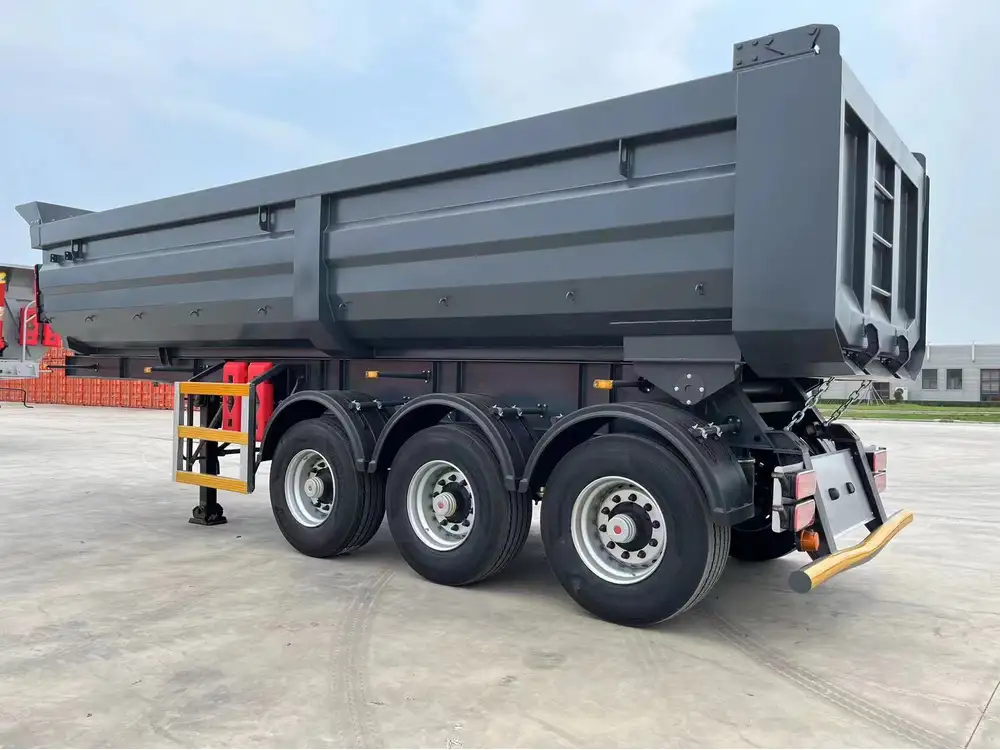In the realm of transportation and logistics, understanding the specific regulations and requirements for different types of trailers is crucial—especially for those operating within California’s unique legal frameworks. A California legal flatbed trailer stands as one of the pivotal options available for transporting various loads efficiently and lawfully.
This article delves deep into the nitty-gritty of California legal flatbed trailers, addressing their specifications, the regulations they must comply with, and how they compare to other trailer types. Our goal is to equip you with the knowledge required to navigate your transportation challenges seamlessly.
Understanding the Definition of a California Legal Flatbed Trailer
Flatbed trailers are characterized by their flat, open surfaces, lacking sides or a roof, which allows for versatile loading options. In California, a flatbed trailer qualifies as “legal” when it complies with a myriad of state-specific regulations. The primary purpose of these regulations is to ensure safety on public roadways while accommodating the diverse needs of cargo transport.
Key Features of California Legal Flatbed Trailers
Dimensions and Weight Limits:
- Length: Maximum total length of 65 feet, including the truck’s length.
- Width: Maximum width is typically 8.5 feet. Special permits may be required for wider loads.
- Height: The total vehicle height should not exceed 14 feet.
- Weight: Standard weight limits do apply, with variations based on axle configuration and overall vehicle design.
Construction Standards:
- Designed with durable materials like steel and aluminum to withstand heavy loads.
- Equipped with securing points for tie-downs to ensure cargo stability during transport.
Braking and Safety Features:
- Equipped with effective braking systems, including electric and air brakes, which must meet California’s Department of Transportation standards.

Regulatory Compliance and Permitting
Operating a flatbed trailer in California goes beyond simply owning one; it requires adherence to a complex set of laws and regulations. A thorough understanding of these laws is paramount, particularly if your business relies heavily on this mode of transportation.
Vehicle Registration and Licensing
- Registration: All flatbed trailers must be registered with the California Department of Motor Vehicles (DMV).
- Licensing: Operators typically need a commercial driver’s license (CDL) to handle trailers exceeding certain weight thresholds.
Special Permits
Certain loads, especially oversized or overweight cargo, may necessitate special permits, which can be obtained from the California Department of Transportation.

The Advantages of California Legal Flatbed Trailers
Flatbed trailers offer a range of benefits tailored to the needs of businesses involved in freight and logistics.
Versatility in Loading
The open design allows for loading bulky items such as construction materials, machinery, and large equipment. It facilitates flexible loading and unloading on job sites where traditional enclosed trailers may fall short.
Increased Efficiency
With the ability to carry larger volumes and heavier loads, flatbed trailers often enhance logistical operations by reducing the number of trips required, translating into time and cost savings.

Enhanced Stability and Safety
With their low profile and solid base, flatbed trailers offer increased stability, reducing the chance of tipping during transportation, particularly for larger loads.
Operational Considerations for Flatbed Trailers
When deciding whether a California legal flatbed trailer is the right choice for your transport needs, consider the following operational aspects.
Load Types and Weight Distribution
Effective weight distribution is essential to maintain the trailer’s stability. Understanding load types—whether they be evenly distributed or concentrated in one area—is critical for safe transport.
| Load Type | Description | Recommended Weight Distribution |
|---|---|---|
| Uniform | Evenly distributed load across the trailer | Maintain central balance |
| Concentrated | A single oversized item, such as machinery | Position towards the front to prevent swaying |

Tie-Down Techniques
The success of transporting loads via flatbed trailers hinges significantly on how well the cargo is secured.
- Ratchet Straps: Ideal for securing lighter loads, providing flexibility without stretching.
- Chains and Binders: Best for heavyweight items, offering maximum stability and security.
Weather Considerations
Transporting open loads exposes them to environmental conditions. Utilizing tarps and covers can mitigate potential damage due to rain, wind, or other elements.
Comparison with Other Trailer Types
To ascertain the benefits of California legal flatbed trailers, it’s advantageous to compare them with other commonly used types of trailers.
| Trailer Type | Description | Advantages | Disadvantages |
|---|---|---|---|
| Enclosed Trailers | Fully enclosed design | Protection from weather, security | Limited accessibility, sometimes less space |
| Drop Deck Trailers | Features a lower deck height | Lower center of gravity for heavy loads | More complex loading/unloading |
| Reefer Trailers | Climate-controlled for perishables | Essential for food transport | Higher operational costs |

Conclusion: Making the Right Choice for Your Transportation Needs
California legal flatbed trailers present an exceptional solution for businesses aiming to enhance their logistics capabilities. Their versatility, efficiency, and adherence to local regulations make them a smart choice for transporting bulky, oversized, or varied loads.
Key Takeaways
- Familiarize yourself with state regulations and weight limits to ensure compliance.
- Utilize proper loading and securing techniques to maximize safety.
- Compare flatbed trailers with other trailer types to identify the best fit for your specific needs.
Ultimately, investing in a California legal flatbed trailer can streamline operations, enhance productivity, and tackle California’s distinctive transport challenges head-on. Through understanding and adhering to legal requirements, and adopting best practices in trailer usage, businesses can optimize their logistical efforts for sustained success.



